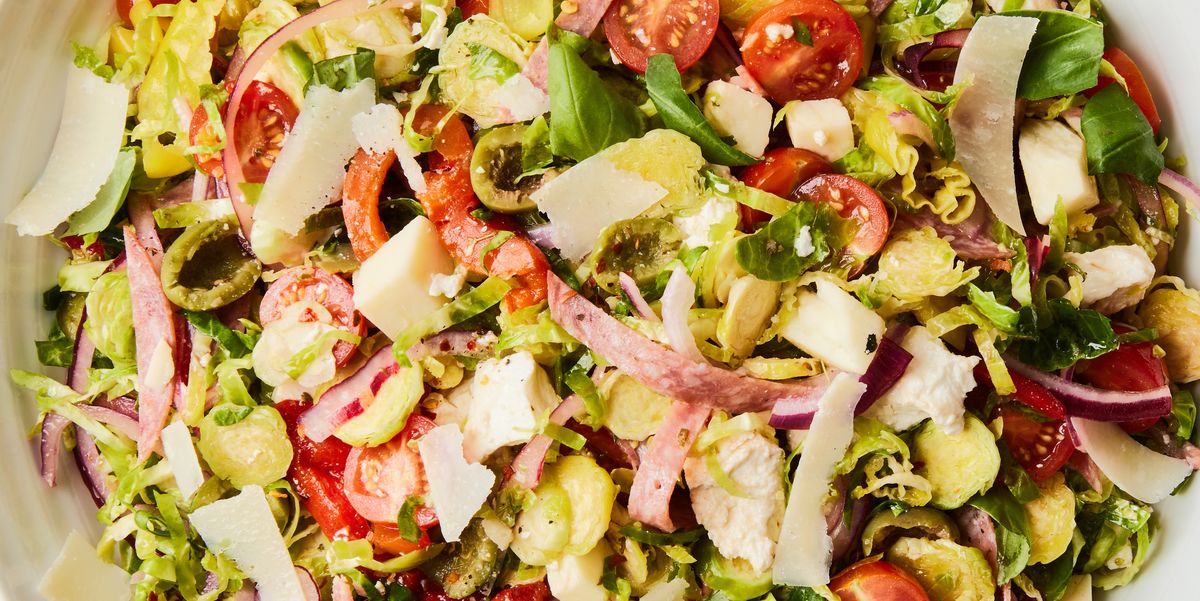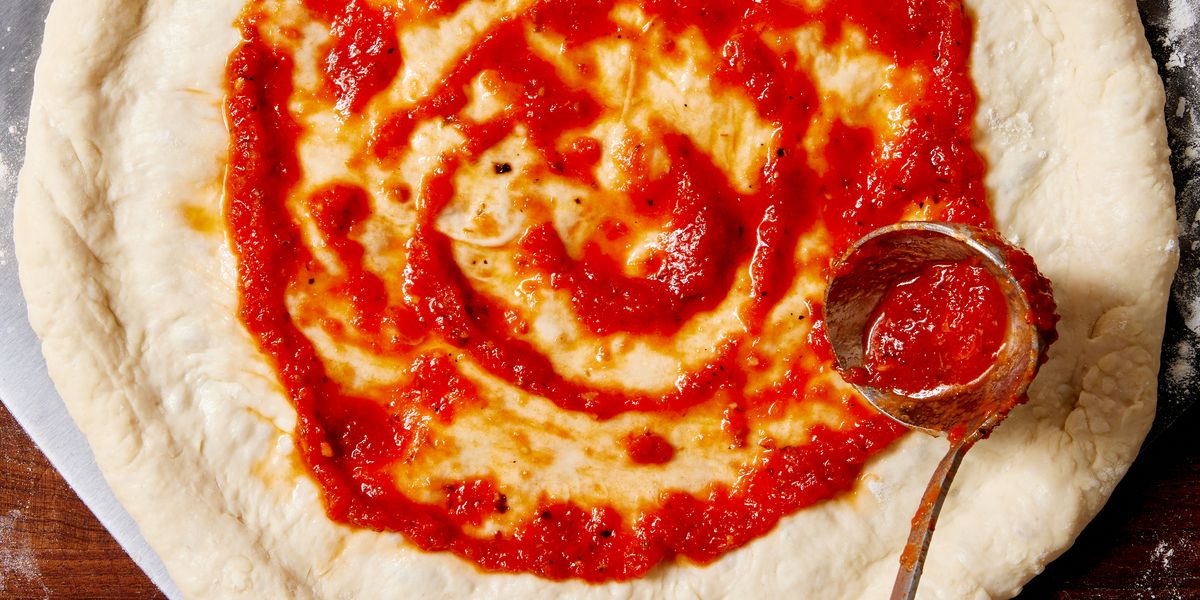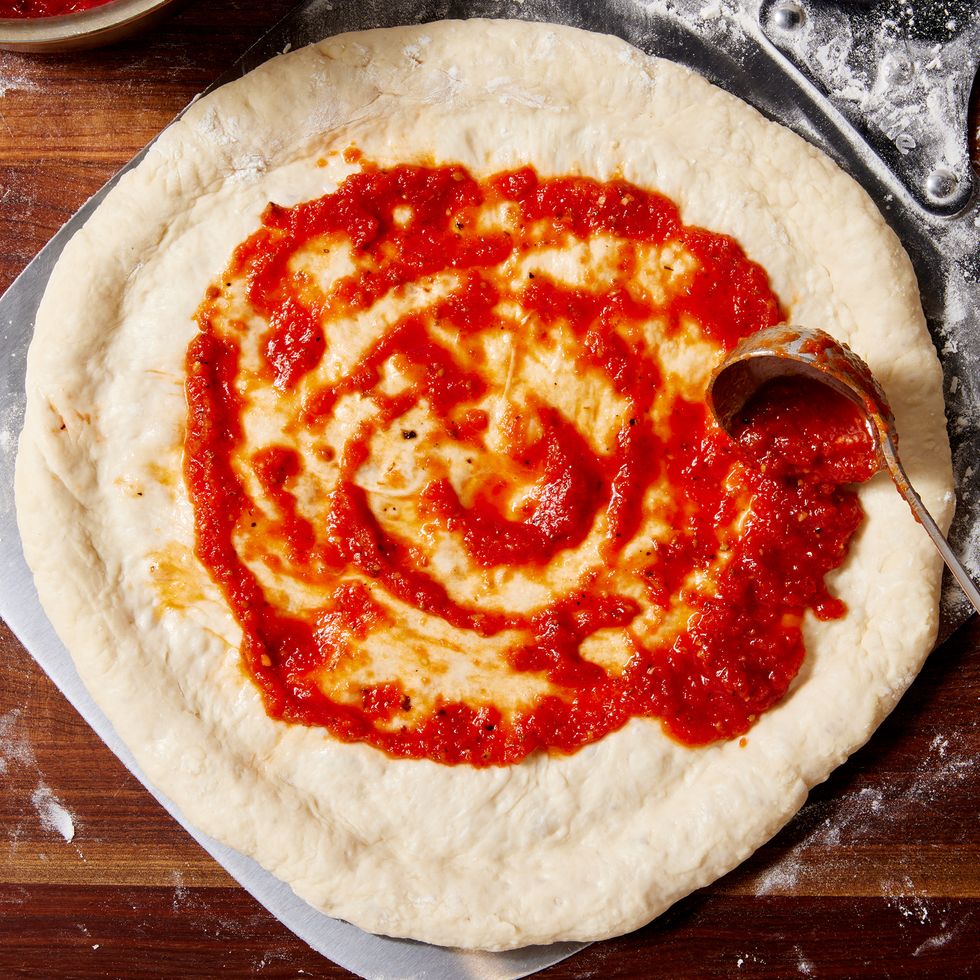Pizza night will forever be one of our favorite weeknight and special occasion dinners. It gets everybody in the kitchen, each pie is infinitely customizable, and we always feel a special sense of accomplishment after tasting a slice made from scratch. Though there are plenty of ways to build and top a pizza, odds are you’ll be starting with pizza dough (ours is the best!) and a layer of tomato sauce.
You could go store-bought, but pre-packaged tomato sauce is often full of sugar and preservatives, is typically sold in measly 14-ounce containers, and often costs more per ounce than your standard jarred pasta sauce. This recipe starts with a can of tomatoes and uses a few pantry staples to transform it into the ideal base for a homemade pie. Here’s what you need to know:
What kind of tomatoes make the best pizza sauce?
We recommend using whole peeled tomatoes here—the consistency of crushed tomatoes varies wildly by brand, and other shapes like diced or chopped include unnecessary additives. Whole peeled tomatoes allow you to control the texture of your finished sauce.
Some die-hard pizza purists may not see the need to cook the tomatoes before topping your pie—but we think it’s a necessary step. Evaporating some of the liquid comes with many perks: It minimizes the metallic taste of the can, it concentrates the savory tomato flavor, and it prevents your pizza crust from getting soggy. Trust us, it’s worth the extra 10 minutes.
How much salt should go in pizza sauce?
You also may notice that salt is an optional ingredient in this recipe. Here’s why: Every can of tomatoes has a different salt content, and it’s also important to consider how you’re planning to use this sauce. If you’re making a pizza with salty toppings like pepperoni, anchovies, or olives, you won’t need to heavily season your sauce. When in doubt, under-salting is better than seasoning too aggressively (you can always rectify the lack of salt by sprinkling more Parmesan on top).
Storage:
The best part of this recipe is that you can make this sauce ahead of time. Simply store it in an airtight container (make sure it’s fully cooled first) and keep it in the fridge for 3 to 5 days or in the freezer for up to 6 months.
Made this? Let us know how it went (and your favorite pizza toppings!) in the comments below.

Pizza night will forever be one of our favorite weeknight and special occasion dinners. It gets everybody in the kitchen, each pie is infinitely customizable, and we always feel a special sense of accomplishment after tasting a slice made from scratch. Though there are plenty of ways to build and top a pizza, odds are you’ll be starting with pizza dough (ours is the best!) and a layer of tomato sauce.
You could go store-bought, but pre-packaged tomato sauce is often full of sugar and preservatives, is typically sold in measly 14-ounce containers, and often costs more per ounce than your standard jarred pasta sauce. This recipe starts with a can of tomatoes and uses a few pantry staples to transform it into the ideal base for a homemade pie. Here’s what you need to know:
What kind of tomatoes make the best pizza sauce?
We recommend using whole peeled tomatoes here—the consistency of crushed tomatoes varies wildly by brand, and other shapes like diced or chopped include unnecessary additives. Whole peeled tomatoes allow you to control the texture of your finished sauce.
Some die-hard pizza purists may not see the need to cook the tomatoes before topping your pie—but we think it’s a necessary step. Evaporating some of the liquid comes with many perks: It minimizes the metallic taste of the can, it concentrates the savory tomato flavor, and it prevents your pizza crust from getting soggy. Trust us, it’s worth the extra 10 minutes.
How much salt should go in pizza sauce?
You also may notice that salt is an optional ingredient in this recipe. Here’s why: Every can of tomatoes has a different salt content, and it’s also important to consider how you’re planning to use this sauce. If you’re making a pizza with salty toppings like pepperoni, anchovies, or olives, you won’t need to heavily season your sauce. When in doubt, under-salting is better than seasoning too aggressively (you can always rectify the lack of salt by sprinkling more Parmesan on top).
Storage:
The best part of this recipe is that you can make this sauce ahead of time. Simply store it in an airtight container (make sure it’s fully cooled first) and keep it in the fridge for 3 to 5 days or in the freezer for up to 6 months.
Made this? Let us know how it went (and your favorite pizza toppings!) in the comments below.
- Yields:
-
2
c.
- Prep Time:
- 5 mins
- Total Time:
- 30 mins
Directions
-
- Step 1
In a food processor or blender, pulse tomatoes and garlic until broken down and slightly chunky, 10 to 15 times. If you prefer a smoother texture, continue to process until smooth.
- Step 2In a large wide pot or saucepan over medium-low heat, cook oil, oregano, and pepper, stirring frequently, until oregano begins to sizzle, about 1 minute.
- Step 3Carefully pour tomato mixture into pot. Cook, stirring occasionally, until most of the liquid has evaporated and sauce is reduced to about 2 cups, 10 to 15 minutes; season with salt, if needed.
- Step 4Make Ahead: Sauce can be made 5 days ahead. Let cool to room temperature, then store in an airtight container in the refrigerator, or freeze up to 6 months.
- Step 1


















Leave a Reply